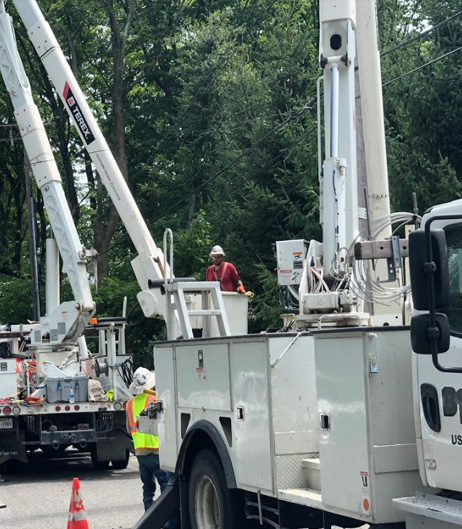Best Practices for Crane Safety in Construction

Crane operations are a critical component of construction projects, but they come with inherent risks that must be carefully managed. Ensuring the safety of workers, equipment, and the surrounding environment is not just a legal requirement—it's a moral obligation. A well-structured safety plan can significantly reduce accidents, boost productivity, and build trust among clients and team members.
At Bobcat Contracting LLC, we specialize in crane rental services in Houston, and our team understands the importance of safety at every stage of the process. In this article, we’ll walk you through key safety practices that every construction manager should implement to ensure a secure and efficient worksite.
Â
The Importance of Equipment Maintenance and Inspection
One of the most fundamental aspects of crane safety is ensuring that your equipment is always in optimal condition. Regular inspections and maintenance are essential to prevent unexpected failures and maintain operational reliability.
- Daily Pre-Operation Checks
Before each shift, operators should perform a visual inspection of the crane, checking for signs of wear or damage. This includes examining the boom, cables, hooks, and all safety mechanisms. Early detection of potential issues can prevent serious accidents down the line.
- Scheduled Preventative Maintenance
In addition to daily checks, cranes should undergo thorough maintenance by certified technicians on a regular basis. This includes checking hydraulic systems, electrical components, and structural integrity. Following manufacturer guidelines helps extend the life of the equipment and ensures it operates safely and efficiently.
Â
Investing in Trained and Certified Personnel
No amount of advanced technology can replace the expertise of trained professionals. The people operating cranes play a crucial role in maintaining a safe work environment.
- Comprehensive Training Programs
All personnel involved in crane operations—whether as operators, riggers, or signalers—should receive proper training. This includes understanding crane controls, load capacities, and emergency procedures. Well-trained teams are better equipped to handle challenges and avoid mistakes.
- Certification for Operators
Certification is more than just a formality; it’s a guarantee of competence. Only certified operators should be allowed to operate cranes. This not only meets industry standards but also builds confidence among project managers and workers alike.
Â
Â
Managing Loads Safely
Proper load management is another critical aspect of crane safety. Overloading or improper rigging can lead to serious accidents and costly damage.
- Respecting Load Capacities
Each crane has a specified maximum load capacity. It’s vital to follow these limits strictly. Exceeding them can cause structural failure, tipping, or even collapse. Always double-check the weight before lifting.
- Correct Rigging Techniques
Rigging is just as important as the crane itself. Using the right gear, securing loads properly, and ensuring balance are all part of safe rigging. Always inspect rigging equipment before use and replace any damaged parts immediately.
Â
Cultivating a Safety-First Culture
Safety should be a shared responsibility across the entire project. Encouraging open communication and continuous learning can help create a safer working environment.
- Open Communication Channels
Operators, riggers, and site supervisors must communicate clearly during lifts. Any concerns should be addressed immediately. Regular safety meetings help reinforce best practices and keep everyone informed.
- Continuous Improvement
Reviewing past incidents and updating safety protocols based on lessons learned is an ongoing process. A proactive approach to safety leads to fewer accidents and a stronger company reputation.
Â
Considering Environmental Factors
Weather conditions, ground stability, and nearby structures can all impact crane operations. Before starting work, assess the site for hazards such as power lines, unstable ground, or strong winds. Adjust your safety plan accordingly to minimize risk.
Â
Using Technology to Enhance Safety
Modern tools like load moment indicators, anti-collision systems, and digital tracking software can greatly improve crane safety. However, these technologies should support—not replace—human judgment and experience.
Â
Planning for Safety from the Start
Good project planning is the foundation of safe crane operations. Conducting site surveys and developing detailed lift plans can help identify and mitigate potential dangers before they become problems.
- Site Surveys and Risk Assessments
Before setting up a crane, survey the area for obstacles, power lines, and ground conditions. Use this information to create a comprehensive risk assessment and develop a strategy to manage those risks.
- Developing Detailed Lift Plans
A well-documented lift plan outlines everything from equipment selection to emergency procedures. It ensures that everyone on the team knows their role and is prepared for the task ahead.
Choose Bobcat Contracting LLC for Reliable Crane Rental Services in Houston!
Implementing these safety measures is essential for any construction project. If you're looking for a trusted crane rental service in Houston that prioritizes safety and quality, Bobcat Contracting LLC is here to help. Our team is dedicated to delivering top-notch crane solutions while maintaining the highest safety standards.
Contact us today for a free quote on crane rental in Houston, and let us help you achieve your construction goals safely and efficiently.
Luohe Letone Hydraulic Technology Co., Ltd , https://www.litonghose.com
